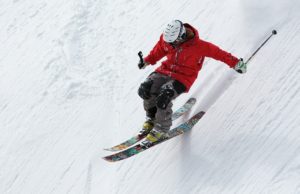Winter Sports Knee Injury
 Sports such as rugby, football and hockey are all a significant cause of knee injuries as all of these activities require some sort of pivoting action; however we tend to see seasonal variations in knee injuries.
Sports such as rugby, football and hockey are all a significant cause of knee injuries as all of these activities require some sort of pivoting action; however we tend to see seasonal variations in knee injuries.
A popular pursuit in winter is skiing. As skiing is a strenuous sport, we see many skiing related injuries. However, risks can be minimized by making sure you are fit to ski. This can be achieved by ski fitness training either with help of a physiotherapist or a sports specific trainer.
If you are unfortunate enough to sustain a knee injury skiing, medical care on most ski resorts is very good and Doctors will probably splint the injured knee and obtain an X-ray.
Once home, the knee should be assessed by a ‘specialist’ in knee injuries to make a definitive diagnosis. This will involve taking a full history and assessment of the knee joint. It is not uncommon to get associated injuries. X-rays are good at looking for fractures, but ‘soft tissue’ knee injuries require MRI scanning to identify the injury more precisely.
Common combinations of knee injuries are the ‘terrible triad’ of anterior cruciate ligament rupture, medial meniscus (cartilage) tear and medial (on inner side of the knee) collateral ligament tear. After the diagnosis, a plan can be made for rehabilitation of the knee involving physiotherapy but may require reconstructive surgery. If surgery is needed this is usually carried out using ‘keyhole’ (arthroscopic) techniques.
This article was written by Mr. HS Gosal, Consultant Orthopaedic Surgeon. Mr. Gosal practices at Nuffield Health Cheltenham Hospital and at the Linton House Clinic, Cobalt Imaging Centre, Cheltenham.
To book an appointment please contact on
t: 01242 246534,
E: info@gosalkneeclinic.co.uk
or visit www.gosalkneeclinic.co.uk
